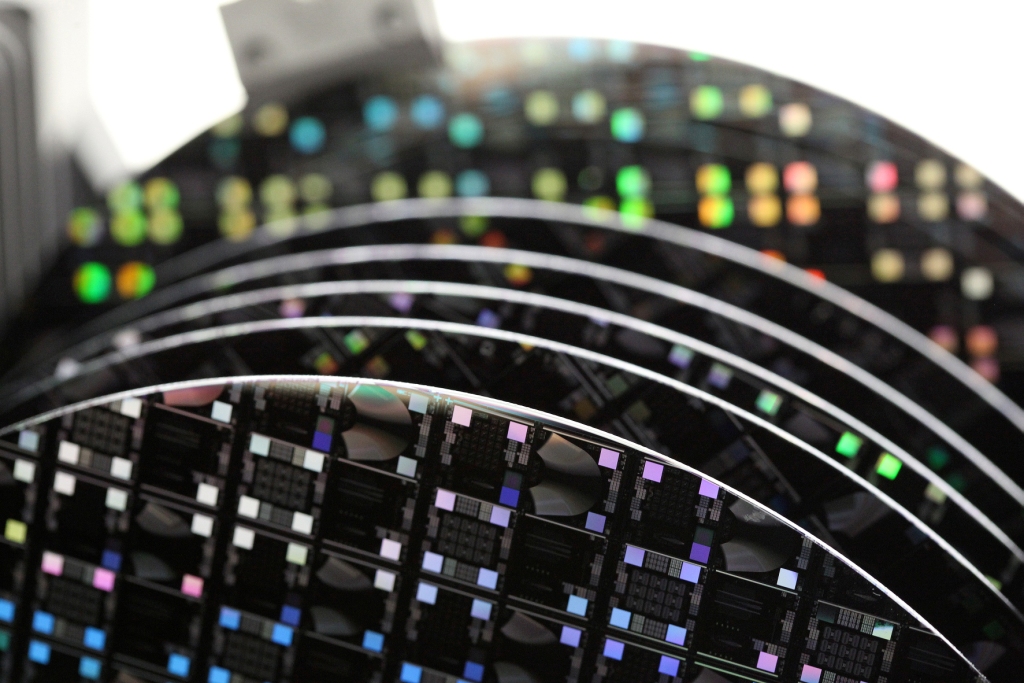Feedback to this page: click here
Comparing lithography methods at DTU Nanolab
|
|
UV Lithography
|
DUV Stepper Lithography
|
E-beam Lithography
|
Nano Imprint Lithography
|
| Generel description
|
Pattern transfer via UltraViolet (UV) light
|
Pattern transfer via Deep UltraViolet (DUV) light
|
Patterning by electron beam
|
Pattern transfer via hot embossing (HE)
|
| Pattern size range
|
- Resist type, thickness, and pattern dependent
- ~0.6 µm and up
|
- pattern type, shape and pitch dependent
- ~200 nm and up
|
|
|
| Resist type
|
- UV sensitive:
- AZ 5214E, AZ 4562, AZ MiR 701 (positive)
- AZ 5214E, AZ nLOF 2020, SU-8 (negative)
|
- DUV sensitive
- JSR KRF M230Y, JSR KRF M35G (positive)
- UVN2300-0.8 (negative)
|
- E-beam sensitive
- AR-P6200 CSAR, ZEP502A , PMMA, HSQ, mr-EBL, AR-N 7520
|
|
| Resist thickness range
|
~0.5µm to 20µm
|
~50nm to 2µm
|
~30nm to 0.5 µm
|
~ 100nm to 2µm
|
| Typical exposure time
|
2s-30s pr. wafer using mask aligners.
10min-5hours pr. wafer using maskless aligners.
|
Process depended, depends on pattern, pattern area and dose
|
Depends on dose, Q [µC/cm2], beam current, I [A], and pattern area, A [cm2]: t = Q*A/I
|
Process depended, depends also on heating and cooling temperature rates
|
| Substrate size
|
- small samples
- 50 mm wafers
- 100 mm wafers
- 150 mm wafers
|
- 100 mm wafers
- 150 mm wafers
- 200 mm wafers
|
We have cassettes that fit to
- 4 small samples (20mm, 12mm, 8mm, 4mm)
- 6 wafers of 50 mm in size
- 3 wafers of 100 mm in size
- 1 wafer of 150 mm in size
- 1 wafer of 200 mm in size
Only one cassette can be loaded at a time
|
- small samples
- 50 mm wafers
- 100 mm wafers
- 150 mm wafers
|
| Allowed materials
|
- Any standard cleanroom material
|
- Any standard cleanroom material
|
- Any standard cleanroom material, except materials that will degas and special treatment for graphene
|
- Any standard cleanroom material
|
Equipment Pages
Lithography Tool Package Training
DTU Nanolab offers a Tool Package Training in Lithography; the course includes theory on lithographic processes and equipment, as well as training in equipment operation and processing in the cleanroom.
The course is for all users that intend to perform any kind of lithographic processing in the cleanroom, and is a prerequisite for training in other lithography equipment.
For details, dates, and course material, please check the course description under Courses.
| Lithography Tool Package Training
|
| Schedule
|
Theoretical part
- Lecture videos that can be viewed at one's leisure.
- A 1 hour "questions and exercises" session 2 times a month (typically Fridays 09:30-10:30).
Practical part
- A 3-4 hour training session 2 times a month, max. 4 persons per session (typically Wednesdays 09:00 - 12:30 or 10:00 - 13:30).
|
| Location
|
Theoretical part
- The location of the "questions and exercises" session is room 121A in building 345C.
Practical part
- The training session takes place inside the cleanroom. The meeting point will be in front of the first equipment.
|
| Qualified Prerequisites
|
- Cleanroom safety course at DTU Nanolab
- Admission to the cleanroom must be obtained before the training session
- Theoretical part must be completed before the training session
|
| Preparations
|
Before the "questions and exercises" session
- Read Sami Franssila "Introduction to Microfabrication" (2010), Chapter 9: Optical Lithography. (Available online from DTU campus)
- Watch the lecture videos (7 videos, 2:41 hours in total). Write down any questions that may arise during the videos.
Before training session
- Complete the theoretical part (Q&E)
- Watch the training videos of spin coating (automatic), exposure (operation, and alignment), and development (automatic).
- Study the equipment manuals. The manuals are available in LabManager.
- Study the TPT process flows (first print, and alignment).
|
| Course Responsible
|
The Lithography Group at DTU Nanolab lithography@nanolab.dtu.dk.
|
| Learning Objectives
|
- Describe fundamental parts of lithographic processing in a cleanroom, design of process flows
- Authorization to use spin coater, mask aligner, and developer at DTU Nanolab
- Calculate relevant process parameters
- Analyze and apply your results of lithographic processing
|
Knowledge and Information about Lithography
|
|
|
Literature
- Franssila, 2010, Chapter 9: Optical Lithography
- Franssila, 2010, Chapter 10: Advanced Lithography
- Lithography Troubleshooter from MicroChemicals
- Application Notes from MicroChemicals
- Handbook of Microlithography, Micromachining, and Microfabrication, Chapter 2: E-beam Lithography
- Stefan Landis,Lithography, Chapter 3: E-beam Lithography
- Application notes from MicroChemicals GmbH, e.g. Lithography Trouble-Shooter
Lecture videos
- Lithography TPT lecture videos (7 videos, 2:41 hours in total) on DTU Podcasts or YouTube
- A full lecture series from a UT Austin course on microfabrication by "litho guru" Chris Mack. Half of the lectures are on (projection) lithography :-)
Lithography TPT lecture slides
|
Training videos
Playlist on YouTube:
Manuals
Process Flows
|
Resists
UV Exposure
Electron Beam Exposure
Deep-UV Exposure
|
